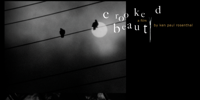Garden Notes and Thoughts From High Point Farm
Submitted by scatter on Tue, 07/19/2005 - 3:29pmFirst I would like to begin by saying that personally, gardening has been, and continues to be one of the most effective actions I can participate in to take care of my mental health. The act of playing in the dirt and working with living plants that are actually in the ground is physically and spiritually grounding in a way that nothing else in my life has ever been. Though I'm very much a city boy by nature, I recognize the importance of the intersection of the wild and the cultivated which meets in the garden. Gardening is something I love to do by myself, but even more it is something I love to do with other people. I think there are a lot of really important lessons about life that was can learn from experiences working with plants and sun and soil and water.
I also want to note that my knowledge of gardening is partially informed by the fact that I've both studied and taught Permaculture, which is a philosophy that recognizes the inherent wisdom in wild ecosystems and attempts to mimic them in human-created systems. Much of the wisdom in Permaculture is gleaned from indigenous traditions that have much more respect for the natural cycles of the earth then our modern culture. I think this is at the heart of important work that needs to happen in the world. And I generally get really excited about this stuff.
These garden notes were originally taken the week of June 27th to July 1st when I had the privilege and opportunity of spending the week with a group of Fountain House folks at High Point Farm. I then hung out in my house in Brooklyn and expounded upon them while sweating and staring longingly at the sunflowers in my front yard.
The importance of Observation before Action
In general I find it is a really good habit to step back and try to clearly observe a situation before making any actual decisions about how to proceed.
A little background on High Point: Big Transitions I think that it is important to note that right now we are in a particularly complex situation regarding our present and future role at High Point because it is in such a dramatic state of transition. Last fall, Charlie the main caretaker of the farm, died suddenly and tragically and left a lot of people in the Fountain House community heartbroken and confused. The two people he left behind, Larry and Kate, who had both been looking forward to retiring later in the season, suddenly found themselves having to stick around and pick up the slack and trying to keep things running in some fashion. Larry, who lives just down the road (but was about to retire to Florida when Charlie died,) has been nothing short of heroic in his determination to keep things operating and functioning at High Point. But there is a couple from England coming to take on the role of head farmers in the Fall and Larry is pretty clear about the fact that he's ready to move on (and head South.) Regarding the gardens specifically, I think it's important to note that while there are actually a number of fenced off garden spaces and apple orchards at High Point, the main focus of the farm in recent years has been with the alpacas and the llamas. While Kate has been the official High Point gardener for the past nine years, in earlier conversations she expressed to me her dismay at the general lack of interest the community has shown in gardening in and felt like her work wasn't appreciated. Timing being what it is, Kate actually RETIRED as the official High Point gardener the week before we showed up and wasn't available for consultation. Thus, we had to go with the flow of transition and do a lot of observing"¦
For the purposes of this little essay/garden report, I'm going to focus our attention on the main garden plot at the farm, for it is in this plot that Kate had obviously put the most and attention, and where we focused the majority of our energy as a group during the week.
The Main Garden
So I'm terrible as coming up with numbers for spaces, but I think it's safe to say that the main garden at High Point is about the size of the back patio on the second floor of Fountain House. There is an impressive fence surrounding it to keep out the big critters and a combination of raised beds (for folks with bad backs) and regular ground-level garden beds, with a pretty snazzy pump and irrigation system going to each bed. There are two structures in the garden area, one that is presently storing tools but has plenty of space and one that is completely underutilized.
There are a number of perennials (plants that come back every spring as opposed to "annuals" which need to be planted every season) growing in the garden including a decent sized bed of asparagus, a patch of strawberries, and hops growing up the side of the shed.
There were a bunch of salad greens and beets and spinach radishes and basil and carrots sowed in the raised beds sown by Kate before she left which needed thinning.
There were a dozen tomato plants in the ground that were just starting to flower.
There were a bunch of culinary herbs planted in the far end of the garden that needed weeding.
There was a big pile of sawdust in the middle of the garden with enormous flowering dock and stinging nettles growing from it wildly and unapologetically.
One of the immediately striking features of the garden upon entrance was the use of black landscape fabric to keep down the weeds. I have come to associate black landscape fabric with gardens that don't have people to work in them. When used properly the fabric keeps down the weeds, but the long-term detriment to the structure of the soil (by always keeping it covered) seems to outweigh the benefits unless there is no other option. Soil is alive and constantly in a state of growth and transition and needs to be taken care of. When we cover it up with black fabric we make it look just like the road and the magic of the land is temporarily masked.
After much observation, we noticed that the largest bed in the garden was suffering from some badly laid out landscape fabric that, although it was on the ground, was poorly laid out and was allowing weeds to grow though and choke out the garden plants anyway.
What me and Carol and Lita and Ariane found when we explored the big garden bed was that there were all these corn, beans, and squash plants growing among the tall weeds and landscape fabric and we decided to rescue them from the weeds.
A Word About Weeds:
a good definition of a weed is a wild plant that isn't useful to people where it is growing. In general, plants that are weeds are very useful. In nature bare ground doesn't stay bare because some grouping of wild plants will always come along and cover the ground. Weeds are usually tough plants that can grow in harsh environments, thick grasses, thistles, and dandelions with deep taproots that pull up nutrients from the subsoil. Pioneers that are part of whatever process nature has in store for us.
Domesticated plants are a whole other scene. Like the alpacas or the chickens at High Point or a housecat in Manhattan, garden plants have co-evolved with humans over long periods of time and can't survive in the wild without the help of humans to tend to them, feed them, and in the case of plants: save their seeds, and replant them again the next season. We are intimately related through evolution and history to the plants in our garden.
More on weeds: when modern humans plant gardens, we tend to create lots of bare ground and the weeds come and grow up around our precious domesticated plants. We either pull them up by hand, with tools, spray chemicals on them, or cover the soil to make sure they don't have room to growup.
Corn, Beans, and Squash: The Three Sisters Garden
Before Kate left she had planted a three sisters garden in the big garden bed. The idea behind a three sisters garden is that the corn, beans, and squash work together in harmony.
In a modern industrial agriculture field, farmers grow enormous crops of single species: acres and acres of identical corn which is grown in uniform rows, sprayed down with chemicals and harvested with big machinery. Because the plants are all identical, there are no checks and balances in the system and the farmers have to spray chemicals to keep away the pests and diseases. Traditional indigenous agriculture used the wisdom of nature and cooperation and it's a whole different scene. Corn is a tall plant and beans naturally need something tall to climb on so they work together. Squash grows low to the ground and has big, spiny leaves which cover the soil and keep animals from climbing up the corn plants to eat the ears. The three plants allow room for each other while cooperating with different tasks. It's a great metaphor for the way groups of people might be able to work with each other if given the chance.
While this is all fine and good in theory, if we hadn't shown up when we did the whole thing was going to be covered and choked out by runner grass and thistle!
On To Action!
On our first day (Tuesday) in the garden there were four of us: Carol, Lita, Ariane, and myself. Carol and Lita both had a lot more experience working at High Point than either Ariane or myself, and they were quick to tell us more of the history of working with Kate over the years. We split up into two teams: Lita and Carol put on gloves and used pruners to cut down the stinging nettles and dock, Ariane and I used garden folks to weed the Three Sisters garden.
Ariane went to the alpaca stable and retrieved a large plastic garbage pail. Lita and Carol put all the stinging nettles in the pail and then we used a hose to fill it up with water. The nettles are full of nutrients that they pull up from the soil so we were using the water to help break those nutrients down and make a "garden tea" from them.
Wednesday
The next day it rained really hard most of the day, but Ariane and I came out into the garden in the afternoon and finished weeding the garden. After taking out six wheelbarrow loads of weeds the corn, beans, and squash plants were uncovered and much happier. We decided to that the best plan of action was to mulch the ground with a thick layer of straw.
The Really Exciting Wednesday Night Salad!
Lamb's Quarters, Spinach, Radishes, Mizuna, Basil, Tarragon, Oregano, Thyme, From one of the other gardens: Lettuce, Marigold Flowers, Pansy's, Purple Chive Flowers, From Brooklyn: Carrots, Collards, Orange Pepper, Grated Dikon Radish, Zucchini, and Avocado The dressing: Apple cider vinegar, umi plum vinegar, Celtic sea salt, and olive oil
A Word About Mulch
Mulch is just a word for any kind of ground cover in the garden. Ideally, the idea of mulch is to mimic what happen in the forest floor when leaves fall and decompose, it is part of the soil building process. We mulch the ground to keep things moist, to protect the ground and build up soil fertility. In modern agriculture, farmers use chemical fertilizers to feed the plants but ignore the long-term health of the soil. In organic gardening, the idea is to feed the soil rather than feeding the plants, because if the soil is healthy the plants will be naturally healthy. A good mulch will feed the soil as it breaks down while protecting it from the elements and weeds.
Nutrient Cycling
In Northern climates where there are cold winters, for thousands of years farmers have been raising animals, fencing them in and letting them graze on grass in the pasture. In order to keep the animals alive over the winter it's necessary to cut the grass and store it somehow. That's what barns are for. There are no barns in tropical places because they don't need to store the nutrients. So basically straw bales are stored nutrients taken from the land. In organic farming it's really common to put down straw mulch on the soil to keep down the weeds and but nutrients back in the soil.
Thursday
On Thursday it was great because after we fed the animals and took care of some other chores, the whole group came over and helped with the garden! We took five straw bales and spread them over the entire three sisters bed. We put up poles for the beans that didn't have corn plant to grow next to them. The "garden nettle tea" was really fermented and full of nutrients and people took turns using it to water all the plants. We weeded and mulched the strawberries. Kyle and I bonded with the garden forks and he got to use up some of that pent up energy he was carrying around. A lot of people commented that it was the most teamwork that happened the whole week and it felt really good.
After the larger group left, Larry came by with the tractor and moved the pile of sawdust over to the compost area and we used it to initiate a new compost pile. A group of us including Ethan and Jessica used the remainder to spread out and mark an idea for the next garden bed.
On a very practical level we figured out that: a. there's a yellow jacket's nest in the empty shed that needs to be removed b. the irrigation system, though it appears to be solidly built, is in some serious need of repair
So there's my piece about the garden for now. I had a blast working in it and I hope I have the opportunity to work in it some more sometime soon. I think that it's really important that in general recognize the connection between nutrition and ownership and mental health. It's not only physically but psychologically unhealthy to eat corporate monoculture food from factory farms and chain stores. It's such a disconnect from how things were for thousands of years and I believe it has a really detrimental effect on all of our mental health. Conversely, I think it's really good for people to have a hand in their food cultivation and be around plant, have some connection to and feel like they're a part of the process of putting the food on their plates.
If it seems like the interest is there in the community, I believe that it is totally possible for us to initiate a more active educational and work garden program at High Point Farm next season. I believe we can take some very basic steps to help that process along this season. For my own mental health I'd love to be a part of making it happen.
Love Sascha


















